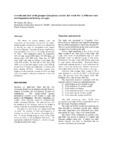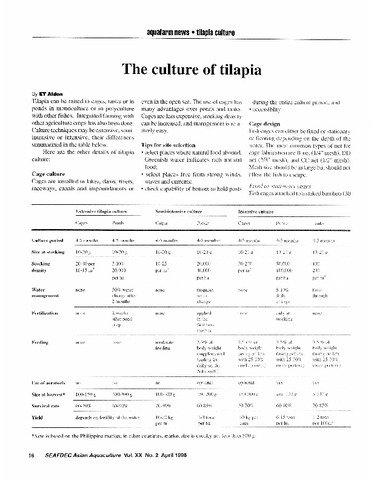Growth and yield of the grouper Epinephelus coioides fed 'trash fish' at different rates and frequencies in floating net cages
- Global styles
- MLA
- Vancouver
- Elsevier - Harvard
- APA
- Help
Share
抄録
The effects of various feeding rates and frequencies on the growth and survival of orangespotted grouper Epinephelus coides were determined in floating net cages in Tiniguiban Cove, Puerto Princesa, Palawan. Juveniles (average weight 60 g) were stocked in 2 m x 2 m x 1.5 m cages at a density of 10/m3. The experiment tested six treatments: 10% of body weight (BW) daily; 5% BW daily; ad libitum daily; 10% BW every other day; 5% BW every other day; and ad libitum every other day. After five months, the fish fed at 10% daily had 100% survival and the highest weight gain (520 g), growth rate (3.5 g/d), net production (31.44 kg), and gross income (P5,463). However, returns were negative in all treatments because of either too high feed consumption and poor conversion or low net production.
Suggested Citation
Galzote, G. V., & Abrera, E. C. (2007). Growth and yield of the grouper Epinephelus coioides fed 'trash fish' at different rates and frequencies in floating net cages. In T. U. Bagarinao (Ed.), Research Output of the Fisheries Sector Program (Vol. 2. Reports on Fisheries and Aquaculture, pp. 25-27). Quezon City, Philippines: Bureau of Agricultural Research, Department of Agriculture.
Type
Book chapterISBN
9718511776
Related items
Showing items related by title, author, creator and subject.
-
The culture of tilapia
Aldon, Eva T. (Aquaculture Department, Southeast Asian Fisheries Development Center, 1998) -
Prospects of milkfish sea cage farming
Cruz, Philip S. (Aquaculture Department, Southeast Asian Fisheries Development Center, 1998) -
Management of feeding aquaculture species
Alava, Veronica R. (Aquaculture Department, Southeast Asian Fisheries Development Center, 2002)This chapter teaches the reader to: differentiate the different feeding strategies in pond culture; learn feeding management methods such as stock sampling and record keeping, calculating daily feed ration, choosing ...





